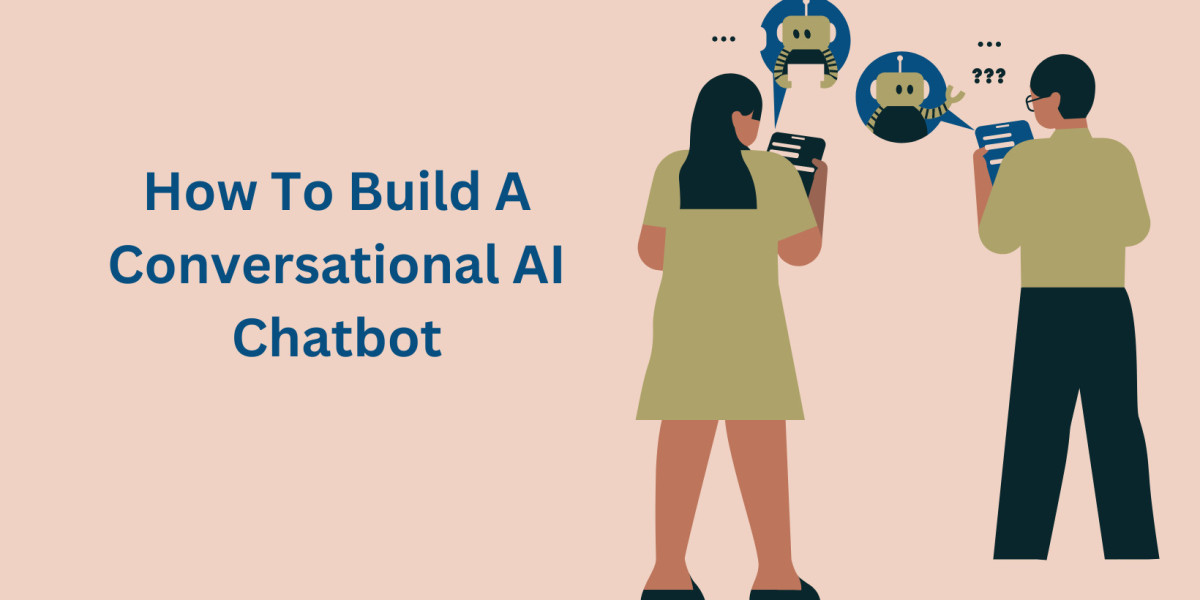Building a conversational AI chatbot can greatly enhance customer interaction, streamline processes, and improve user experience. This guide will walk you through the essential steps of creating a conversational AI chatbot, using simple English for better understanding.
What is a Conversational AI Chatbots ?
A conversational AI chatbot is a software application that uses artificial intelligence to interact with users in natural language. These chatbots can understand and respond to text or voice inputs, making them useful for various applications like customer service, personal assistants, and more.
Benefits of Conversational AI Chatbots
Enhances Customer Service
Conversational AI chatbots can provide 24/7 support, answer frequently asked questions, and handle multiple queries simultaneously, improving overall customer satisfaction.
Saves Time and Resources
By automating routine tasks, chatbots free up human agents to focus on more complex issues, leading to more efficient use of time and resources.
Provides Consistent Responses
Chatbots ensure that all customers receive accurate and consistent information, reducing the risk of human error.
Steps to Build a Conversational AI Chatbot
1. Define Your Objectives
Before you start building your chatbot, it's crucial to define your objectives. Determine what you want the chatbot to achieve, such as:
- Answering customer queries
- Booking appointments
- Providing product recommendations
2. Choose the Right Platform
Several platforms can help you build a conversational AI chatbot. Some popular options include:
- Dialogflow: Google’s chatbot development platform.
- Microsoft Bot Framework: Offers a comprehensive set of tools for building and deploying chatbots.
- IBM Watson Assistant: Known for its advanced AI capabilities.
3. Design the Conversation Flow
Creating a conversation flow is like scripting the chatbot's dialogue. This step involves:
- Mapping out different scenarios
- Anticipating user inputs
- Defining appropriate responses
4. Prepare Your Training Data
Chatbots learn from data, so it's important to prepare a robust set of training data. This data should include:
- Common questions and their variations
- Relevant answers
- Context-specific responses
5. Develop Natural Language Processing (NLP) Capabilities
NLP allows the chatbot to understand and interpret human language. Implementing NLP involves:
- Tokenization: Breaking down text into individual words or phrases
- Intent Recognition: Identifying the purpose behind the user’s input
- Entity Recognition: Detecting specific data points like dates, names, and locations
6. Integrate with Existing Systems
For a chatbot to be effective, it should integrate seamlessly with your existing systems. This could include:
- CRM (Customer Relationship Management) software
- Databases
- API (Application Programming Interface) services
7. Implement Machine Learning Models
Machine learning models help the chatbot improve over time. These models can learn from interactions and adapt their responses accordingly. Techniques include:
- Supervised Learning: Training the model with labeled data
- Unsupervised Learning: Allowing the model to find patterns in unlabeled data
- Reinforcement Learning: The model learns by receiving feedback from its actions
8. Test Your Chatbot
Testing is a crucial step in chatbot development. Ensure your chatbot performs well by:
- Conducting alpha and beta tests
- Gathering user feedback
- Iteratively improving based on the feedback
9. Deploy and Monitor
Once your chatbot is tested and ready, deploy it on your desired platforms (e.g., website, mobile app). Post-deployment, continuously monitor its performance and make necessary adjustments.
10. Maintain and Update
Regular maintenance and updates are essential for a chatbot’s success. This involves:
- Regularly updating the training data
- Monitoring performance metrics
- Making improvements based on user feedback
Conclusion
Building a conversational AI chatbot involves several key steps: defining objectives, choosing the right platform, designing conversation flows, preparing training data, developing NLP capabilities, integrating with existing systems, implementing machine learning models, testing, deploying, and maintaining the chatbot. By following these steps, you can create an effective chatbot that enhances customer service, saves time and resources, and provides consistent responses.
FAQs
1.What is the main purpose of a conversational AI chatbot?
The main purpose of a conversational AI chatbot is to interact with users in natural language, providing automated assistance, answering queries, and performing tasks to enhance user experience and streamline operations.
2.How does a conversational AI chatbot understand user inputs?
A conversational AI chatbot uses Natural Language Processing (NLP) to understand and interpret user inputs. NLP involves processes like tokenization, intent recognition, and entity recognition to comprehend the user's message and respond appropriately.
3.Can a chatbot improve over time?
Yes, chatbots can improve over time through machine learning. By continuously learning from user interactions and feedback, they can adapt and enhance their responses, becoming more accurate and effective.
4.What platforms are available for building a conversational AI chatbot?
Several platforms are available for building a conversational AI chatbot, including Dialogflow (Google), Microsoft Bot Framework, and IBM Watson Assistant. Each platform offers different tools and features to help you develop and deploy your chatbot.
5.Is it necessary to integrate a chatbot with existing systems?
Yes, integrating a chatbot with existing systems like CRM software, databases, and API services is crucial for its effectiveness. Integration ensures that the chatbot can access and use relevant data to provide accurate and helpful responses.
Also Read : How To Build A Conversational AI



